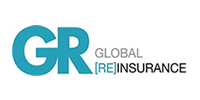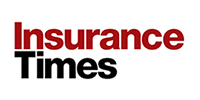The reinsurance broker provides an update on the aviation reinsurance market, which is facing significant loss activity.

The aviation reinsurance market is heading into renewals with a markedly different backdrop than at the start of the year. After a relatively restrained 1 January 2025 round, a series of significant airline losses and shifting retrocession dynamics could now push reinsurers to reconsider programme structures and pricing.
Paul Smith and Dominic Riley, managing directors in Howden Re’s aviation and space team, highlight cumulative loss activity and retrocession sensitivity as the two main forces influencing sentiment.
The first half of 2025 brought two headline losses. In January, American Airlines suffered a major incident, with reserves still under discussion but expected to be substantial.
In June, Air India’s loss was reportedly reserved at more than $400m. These followed the Jeju Air crash of late 2024, the deterioration of several older claims, and the initial crystallisation of Russia/Ukraine exposures.
“These losses are expected to flow through quota share and XoL structures, with American Airlines possibly affecting upper XoL layers, and Air India impacting the first layers of many all-risk general and, potentially, hull war-specific programmes,” said Smith.
“While capacity for non-proportional major risk business remains abundant, ongoing attritional pressure combined with the cumulative scale of these events could directly influence how 2026 reinsurance programmes are structured and priced.”
At the mid-year 1 July renewals, first-tier XoL and retrocession pricing held broadly flat. But the scale of the American Airlines claim is likely to put retro structures under closer scrutiny, given that many are triggered at around $400m. Analysts suggest this could spark a repricing of retrocession layers, though speculation about potential government contributions may soften the impact.
The continued rise of managing general agents is another feature reshaping the landscape. Their ability to deploy capacity quickly and make nimble underwriting decisions has made them increasingly important in aviation, where traditional carriers can be hampered by slower governance.
“MGA-led platforms continue to expand their role in the aviation space,” said Smith. “They’re well-positioned to respond quickly in a market that increasingly demands speed, specialisation, and clear risk appetite.”
Looking ahead, reinsurers are expected to adopt a more cautious stance in the second half of the year. While overall capacity remains available, cedants may face firmer pricing in upper XoL and retro layers, alongside pressure to review retentions and rebalance quota share structures.
“The full impact of the current set of circumstances will become evident by the turn of the year,” said Riley. “All eyes will be on the fourth-quarter major risk airline renewal placements to see whether these factors lead to a sustained recalibration or a continued holding pattern.”










No comments yet